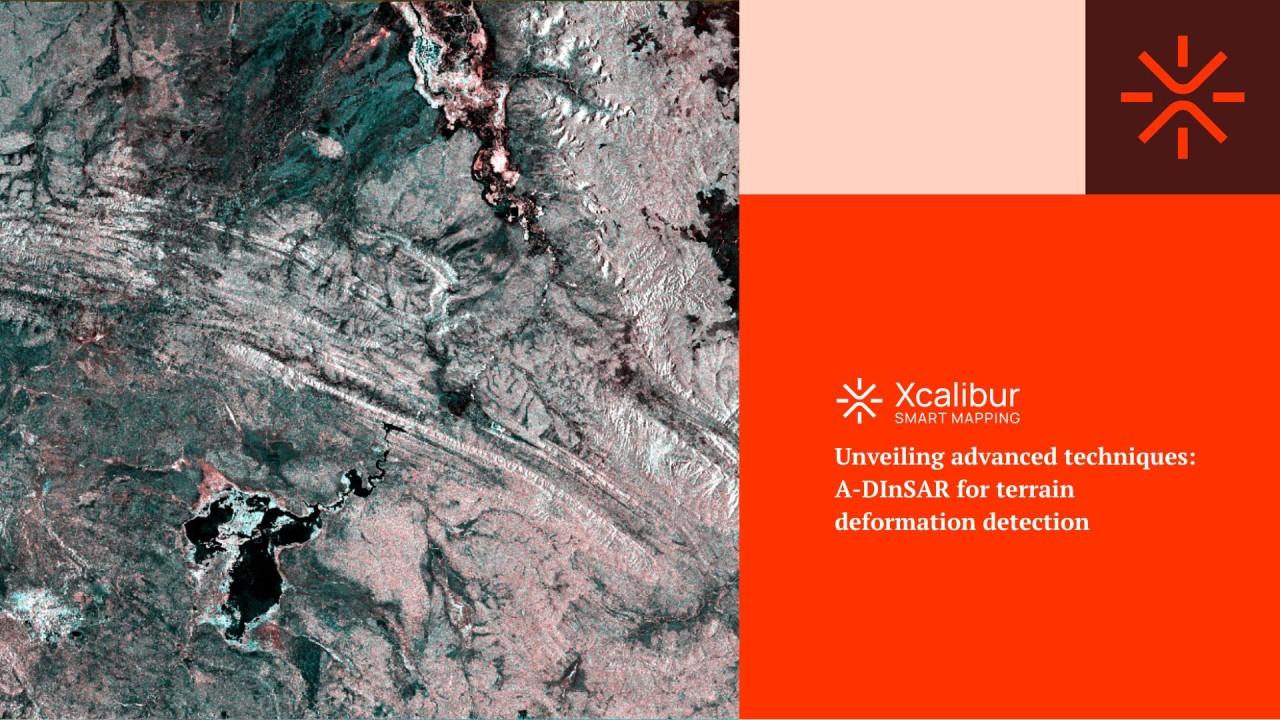
Unveiling advanced techniques: A-DInSAR for terrain deformation detection
Adressing global challenges in terrain stability and subsidence detection
Ground deformations, particularly associated with slope instability, subsidence, and other geological hazards, pose real threats to society, the environment, and infrastructure, resulting in substantial economic losses and, tragically, human casualties. These processes usually develop in rugged terrain with steep slopes and/or due to the development of multiple external agents, such as periods of intense rainfall, floods, coastal dynamics or anthropic activity (mainly mining activity).
Today, a plethora of advanced remote sensing techniques, when combined with traditional field methods and geodescic tools, offer powerful means to detect and analyze these phenomena. Among these, Advanced Differential SAR Interferometry (A-DInSAR) stands out as one of the most innovative and effective approaches.
At Xcalibur Smart Mapping , we leverage A-DInSAR techniques to detect, analyze, and monitor terrain deformations in our projects. Our Spatial Technologies team conducts comprehensive terrain studies over extended periods by acquiring and processing a large number of Synthetic Aperture Radar (SAR) satellite images. With its high spatial and temporal resolution, A-DInSAR enables the acquisition of coherent and suitable data for studying slope instability and subsidence phenomena.

Below, you'll find the area of study viewed from Google Earth and the georeferenced interferogram of the study area. This display illustrates the phase difference information extracted from the radar image, which is then transformed into terrain displacement velocity in mm/year.

Each pixel represents terrain displacement velocity within the scale provided on the right. Red points indicate higher terrain displacement. In this context, this hazard is interpreted as subsidence phenomena (terrain sinking).

In the final figure, you'll find the map displaying the average terrain deformation velocity. This serves as the final product, where green areas and points denote stable or non-deforming zones, while red areas and points indicate more active areas.

If this topic interests you or you're looking to delve deeper into it, we invite you to get to know our expert Jerymy Antonio Carrillo Bravo. Whether you're seeking expertise for a specific project or simply want to learn more about the applications of remote sensing, we encourage you to contact him.

After examining the complexities of terrain deformation and the innovative solutions offered by Advanced Differential SAR Interferometry (A-DInSAR), it's evident that this technology holds immense potential in addressing the challenges posed by slope instability and subsidence phenomena. By leveraging A-DInSAR techniques, organizations like Xcalibur Smart Mapping can effectively detect, analyze, and monitor terrain deformations, ultimately mitigating risks to society, the environment, and infrastructure.
Through comprehensive terrain studies conducted over extended periods, A-DInSAR provides valuable insights with its high spatial and temporal resolution, enabling the identification of hazard-prone areas and the development of proactive measures to ensure safety and sustainability.
At Xcalibur Smart Mapping, our commitment to innovation and technological advancement drives us to continually explore the possibilities of understanding and applying remote sensing technologies. We believe the future holds promise for even greater strides in terrain monitoring and hazard mitigation, ushering in a new era of resilience and environmental stewardship.